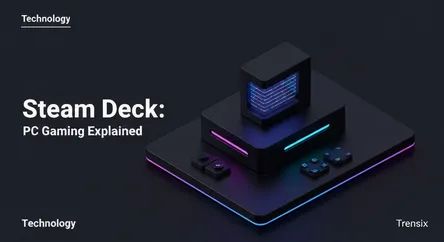Technology
Steam Deck: PC Gaming Explained

Discover the Steam Deck, Valve's powerful handheld PC that lets you play your entire Steam library on the go. Is it the future of portable gaming?
What is it?
The Steam Deck is a portable handheld gaming computer developed by Valve Corporation. Essentially a small PC, it's designed to play the vast library of games available on Valve's digital storefront, Steam. It runs a custom Linux-based operating system called SteamOS, which provides a console-like user experience, but users can also install Windows. The device features a 7-inch touchscreen, traditional gamepad controls, two trackpads, and a powerful custom AMD processor, making it capable of running many modern PC games in a compact, portable form factor.
Why is it trending?
The Steam Deck's popularity stems from its unique proposition: delivering a full-fat PC gaming experience in the palm of your hand. Unlike traditional consoles like the Nintendo Switch, it provides access to a user's existing Steam library, including frequent sales and a massive catalog of indie and AAA titles. Its competitive price point and the recent release of an upgraded OLED model have fueled continued interest. The device's versatility and the active community creating custom modifications and improvements also make it a constant topic of conversation among tech enthusiasts and gamers.
How does it affect people?
For gamers, the Steam Deck fundamentally changes where they can enjoy their PC games, freeing them from the desk. It makes PC gaming more accessible and convenient, whether on the couch, during a commute, or while traveling. It has also ignited a new market for handheld gaming PCs, pushing competitors like ASUS and Lenovo to release similar devices. This competition benefits consumers by driving innovation, improving performance, and offering more choices in the portable gaming space, effectively blurring the lines between console and PC gaming.